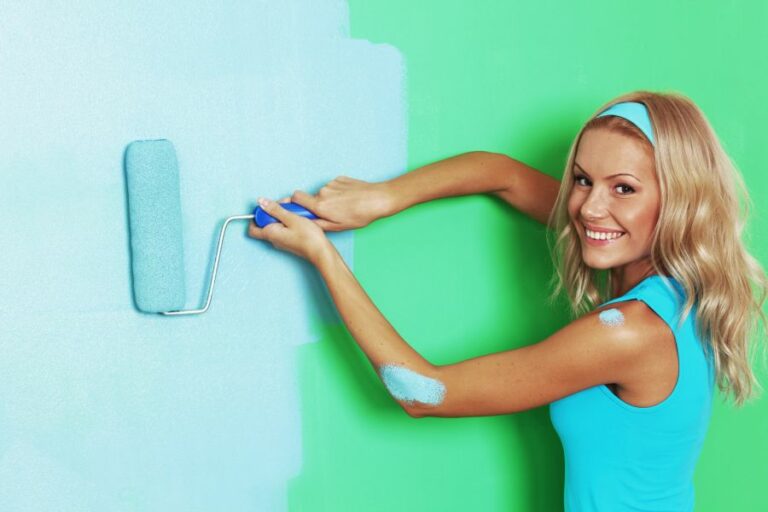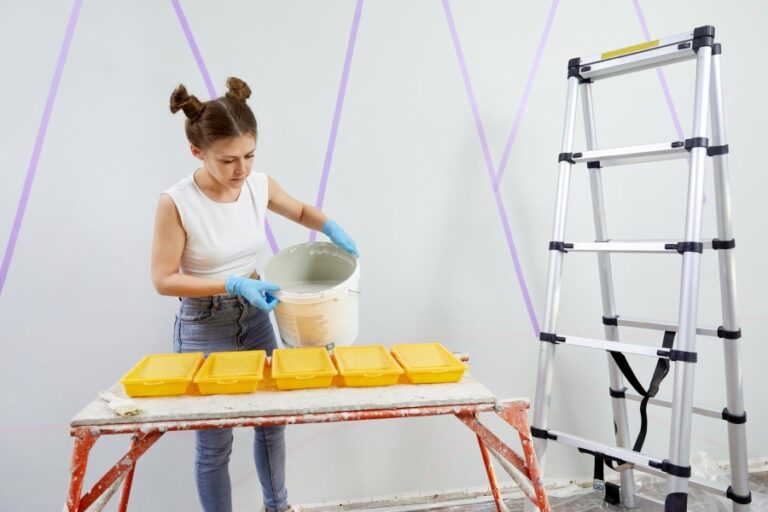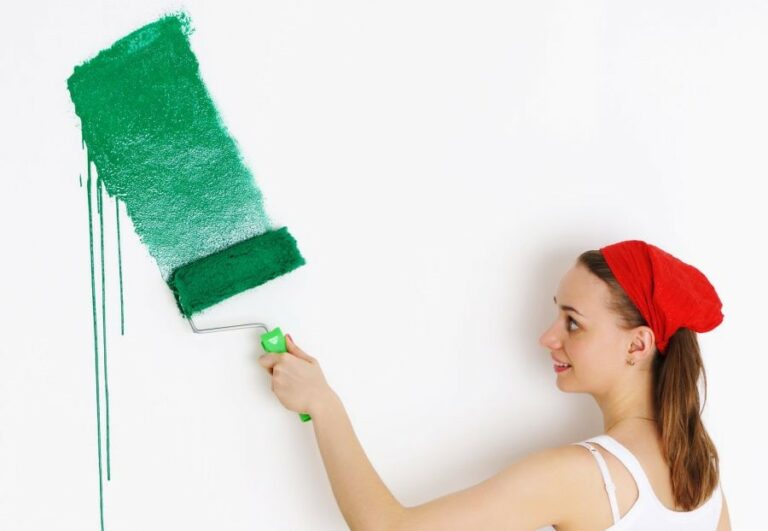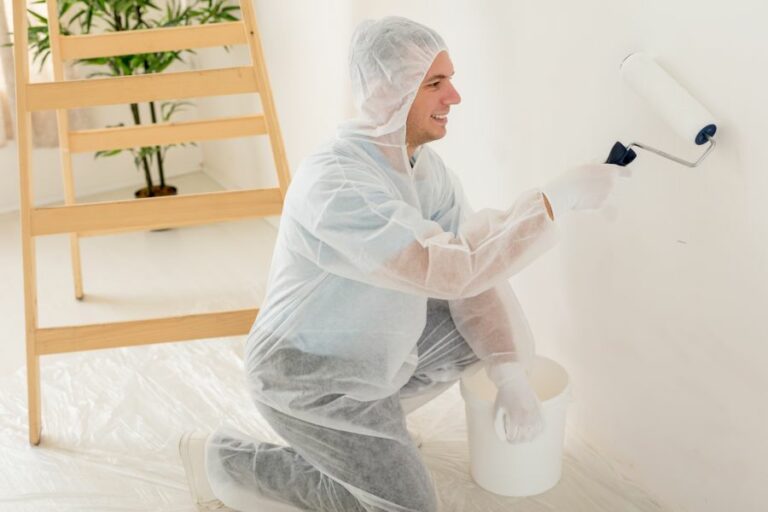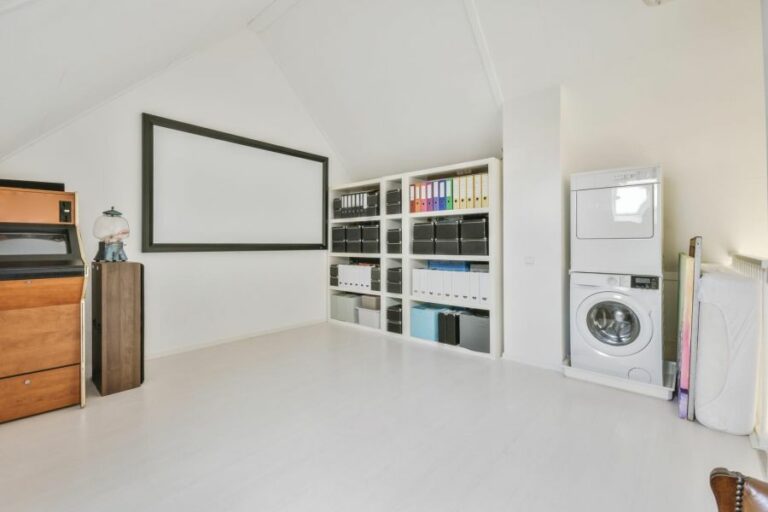Indoor Paint With A Satin Sheen
Are you looking to revamp your indoor space with a fresh coat of paint and considering the right finish to bring your walls to life? Look no further! I’ve got the perfect solution for you: indoor paint with a satin sheen. My expertise in the matter will ensure the ideal result you seek. Combining durability with a subtle glow, this versatile finish maintains an inviting atmosphere in any room while offering easy maintenance for everyday living.
Indoor paint with a satin sheen:
Indoor paint with a satin sheen balances durability and aesthetics, making it a popular choice for home interiors. Satin sheen provides a smooth, velvety appearance with a subtle glow, hides minor imperfections, and is easy to clean. It suits various surfaces, including living rooms, bedrooms, hallways, and bathrooms.

Discover the benefits and beauty of indoor paint with a satin sheen. From its luxurious appearance to easy maintenance, let me guide you through the process of choosing the perfect paint for your home. So, read on to uncover tips, tricks, and industry secrets to elevate your space.
Contents
- 1 Satin Sheen Indoor Paint
- 2 Is Satin Finish Suitable for Interior Paint?
- 3 Eggshell Vs. Satin: Which Interior Paint to Choose?
- 4 Identifying Satin Finish Paint
- 5 Appropriate Situations for Using Satin Paint
Satin Sheen Indoor Paint
Selecting the perfect paint for your home’s interior is an important decision anyone faces while renovating or updating their space.
One factor to consider when selecting paint is the sheen or finish. The choice of sheen can greatly impact the appearance and durability of your painted surfaces. Among the various options available, indoor paint with a satin sheen is a popular choice, offering the ideal balance between durability and aesthetics.
• What is Satin Sheen?
A satin sheen, sometimes referred to as a satin finish or silk finish, falls between a flat or matte finish and a semi-gloss finish in terms of sheen levels. It has a subtle glow or luster, giving the painted surface a smooth and velvety appearance.
Unlike glossier finishes, a satin sheen does not magnify surface imperfections and is generally easier to clean.
• Benefits of Satin Sheen Paint
There are numerous benefits to using paint with a satin sheen in your home. Some of these advantages include:
– Durability
Satin sheen paint has a higher level of durability when compared to flat or matte finishes. It is more resistant to scuffs, scratches, and stains, making it a long-lasting option for various surfaces throughout your home.
– Easy to Clean
One of the key advantages of a satin sheen is its ease of cleaning. It allows for gentle scrubbing, making it easier to keep your painted surfaces looking clean and fresh. This characteristic is especially valuable in high-traffic areas or rooms prone to dirt and stains.
– Versatility
Satin sheen paint can be used in various areas of your home, including living rooms, bedrooms, hallways, and bathrooms. Its durability makes it suitable for areas that receive high levels of wear and tear, while its subtle luster adds a touch of elegance to any space.
– Hides Imperfections
While satin sheen paint is not as effective in hiding surface imperfections as a flat or matte finish, it still does a better job than glossier finishes. This makes it a suitable choice for walls that may have minor imperfections, dents, or uneven surfaces.
– Aesthetically Pleasing
A satin finish provides a smooth and velvety appearance with a subtle glow that can enhance the overall look of your space. It strikes the perfect balance between a flat and gloss finish, giving your interiors a modern and sophisticated look.
• How to Choose the Right Satin Sheen Paint
When selecting the right satin sheen paint for your home, consider the following factors:
– Paint Quality
Opt for a high-quality paint brand to ensure durability, color retention, and longevity. High-quality paint is more resistant to fading, yellowing, and wear and tear.
– Surface Preparation
For best results, ensure proper surface preparation before applying satin sheen paint. This includes cleaning the surface of dirt, dust, and grease and repairing any cracks or holes. A well-prepared surface will help the paint adhere better, resulting in a smoother and more even finish.
– Priming
Using a primer before applying the paint can be beneficial, especially on surfaces that have never been painted or have significant color differences. Primer helps improve paint adhesion, coverage, and overall durability.
– Proper Application Technique
Follow the recommended application techniques provided by the paint manufacturer. This may include using the appropriate brush or roller type, applying thin and even coats, and allowing the recommended drying time between coats.
• In Conclusion
Indoor paint with a satin sheen is an excellent choice for a variety of home interiors. Its durability, ease of cleaning, and aesthetically pleasing appearance make it a popular option among homeowners.
By considering the factors outlined above, you can select the perfect satin sheen paint for your home and enjoy the many benefits it has to offer.
For more information on selecting paint finishes, you can visit the Paint Quality Institute website, a reliable and comprehensive source for all your paint-related questions.
Is Satin Finish Suitable for Interior Paint?
• Overview of Satin Finish
Satin finish, also known as eggshell finish, refers to a type of paint sheen that falls between a flat and semi-gloss finish.
It is characterized by a low shine and a smooth, silky texture. This finish is considered ideal for rooms where there is moderate traffic and where a slight sheen is desired without the high gloss effect. But the question remains – is satin a good finish for interior paint?
• Application of Satin Finish in Different Rooms
– Living Room and Dining Room
Satin finish works well in rooms with significant foot traffic, such as living rooms and dining rooms, as it can withstand more wear and tear than a matte finish while still providing a subtle shine. Additionally, the light sheen reflects light softly, which can help to make the room appear larger and more inviting.
– Kitchen and Bathroom
One major advantage of satin finish paint is its resistance to moisture and easy-to-clean surface. Thus, it is an excellent option for kitchens and bathrooms, where the walls often face splashes and humidity. The slight sheen also adds a touch of elegance without being too distracting.
– Bedroom and Nursery
Choosing a satin finish for bedrooms and nurseries is a wise choice. Its subtle shine provides a warm and cozy atmosphere, while its easy-to-clean surface ensures that any dirt or stains can be wiped away without causing damage to the paint.
– Hallways and Stairs
High-traffic areas such as hallways and stairs demand a paint finish that can withstand regular wear and tear. Satin finish is an ideal choice because its low sheen masks minor imperfections and scuffs better than a flat finish, and it is more durable than a matte finish.
• Advantages of Satin Finish
– Durability
Satin finish is highly durable, making it an excellent choice for high-traffic rooms and areas that are exposed to a lot of wear and tear. It is more resistant to scratches and dents than flat or matte finishes, ensuring your walls remain pristine for a longer time.
– Easy to Clean
Satin finish paint is easy to clean and maintain, as it can be wiped down with a damp cloth without causing damage to the surface. This is especially useful in rooms where dirt and grime can easily accumulate, such as kitchens and bathrooms.
– Subtle Sheen
The low sheen characteristic of the satin finish adds a touch of elegance and sophistication to any room. Its soft shine is less reflective than semi-gloss or high-gloss finishes, providing a more inviting and cozy atmosphere.
– Hiding Imperfections
Satin finish paint is effective in hiding imperfections on the wall surface, such as small dents, nail holes, or uneven textures. The low shine reflects less light, making these flaws less noticeable.
• Disadvantages of Satin Finish
– More Expensive than Flat or Matte Finishes
Satin finish paint tends to be more expensive than flat or matte finishes due to its added durability and stain resistance. However, the long-term benefits of having a paint finish that can withstand wear and tear may justify the additional expense.
– Less Forgiving during Application
Satin finish paint is less forgiving during the application process, as it is more likely to show brush strokes and roller marks if not applied evenly. This can be mitigated by using a high-quality paintbrush or roller and applying the paint in thin, even coats.
– Not Suitable for Walls with Significant Imperfections
While satin finish is effective at hiding minor imperfections, it is not suitable for walls with significant flaws, such as large cracks or uneven surfaces. In such cases, a flat or matte finish may be better suited to camouflage the imperfections.
• Final Thoughts
In conclusion, satin finish paint is a versatile and practical option for many interior rooms. Its durability, easy-to-clean surface, subtle sheen, and ability to hide minor imperfections make it a popular choice for homeowners.
However, its higher cost and less forgiving application process should also be taken into consideration, as well as the condition of the walls.
When choosing the right paint finish for your interior walls, remember to evaluate your specific needs, preferences, and the intended use of the space. If you are unsure or need further assistance, consult a professional painter for guidance and recommendations.
Eggshell Vs. Satin: Which Interior Paint to Choose?
When it comes to selecting paint for the interior of your home, there are many factors to consider. Two popular paint finishes that many homeowners find themselves choosing between are eggshell and satin.
Both options have their benefits and drawbacks, so it’s important to understand the differences between them before making a decision.
• Characteristics of Eggshell Paint
Eggshell paint has a slight sheen to it and is often compared to the appearance of an actual eggshell. It is in between matte and satin when it comes to the level of reflectiveness. Eggshell is known for its durability and is able to hide imperfections in walls and surfaces.
– Pros of Eggshell Paint
- Durability: Eggshell paint is a popular choice for high-traffic areas because of its ability to withstand wear and tear. Its durability makes it perfect for homes with children, pets, or heavy usage.
- Hides Imperfections: The low reflectiveness of eggshell paint helps to hide any unevenness or small imperfections on the wall’s surface. This makes eggshell paint a wise choice when painting older homes or walls with minor damage.
- Easy to Clean: Although not as easy to clean as high-gloss paints, eggshell paint can still be cleaned with a damp cloth or sponge without causing damage to the paint.
– Cons of Eggshell Paint
- Not as Reflective: Some homeowners may find the lack of reflectiveness in eggshell paint to be a disadvantage, as it doesn’t have the same shiny appearance that some other finishes do.
- Less Suitable for Humid Areas: Despite its durability, eggshell paint might not hold up as well in extremely humid areas such as bathrooms, where more moisture-resistant finishes are preferable.
• Characteristics of Satin Paint
Satin paint has a higher sheen level than eggshell, but it’s not as shiny as semi-gloss paint. It is known for its easy-to-clean surface and light-reflecting qualities.
– Pros of Satin Paint
- Reflective: Satin paint’s higher sheen makes it more reflective than eggshell paint. This can create a brighter, more inviting look in a room.
- Easy to Clean: Satin paint is incredibly easy to clean, requiring only a damp cloth or sponge. This feature makes it a great choice for kitchens, bathrooms, and other spaces that may require frequent cleaning.
- Adaptable: Satin paint works well on both walls and trim, making it a versatile option.
– Cons of Satin Paint
- Shows Imperfections: Unlike eggshell paint, satin paint does not hide imperfections as well. Its reflective surface can make small irregularities in the wall more apparent.
- Less Durable: While still considered a durable option, satin paint is not quite as resilient as eggshell paint. It may show signs of wear in high-traffic areas.
• Making the Decision: Eggshell or Satin?
When choosing between eggshell and satin paint for your interior walls, it’s important to weigh the pros and cons of each finish based on the specific needs of your space. Consider the following:
- For high-traffic areas and rooms with children or pets, eggshell paint is a more durable option that is better able to withstand wear.
- If hiding imperfections in the wall is a priority, eggshell paint is the better choice due to its lower reflectiveness.
- For spaces that may require frequent cleanings, such as kitchens or bathrooms, satin paint is the more practical option due to its ease of cleaning.
- If you prefer a more reflective surface that can create a brighter and more inviting space, satin paint is a great choice.
Ultimately, the choice between eggshell and satin paint will depend on the specific requirements and preferences of your space. It’s a good idea to test both finishes on a small section of the wall to see which one will work best in your home.
The US Department of Energy offers tips on how different paint finishes can impact energy efficiency in your home, which can also be a factor when making your decision.
In conclusion, the decision between eggshell and satin paint for your interior walls comes down to durability, reflectiveness, and the overall desired appearance.
By weighing the pros and cons of each finish and considering the needs of your space, you can make an informed decision that will result in a beautiful and functional interior paint job.
Identifying Satin Finish Paint
A satin finish is a versatile option for various surfaces in your home or workspace. It provides a smooth, lustrous appearance, striking a balance between the high shine of a gloss and the matte finish of flat paints.
• Characteristics of Satin Finish Paint
Satin finish paint, also known as eggshell or silk finish, features a unique sheen and specific composition, which sets it apart from other types of paint finishes.
– Sheen and Texture
The sheen in satin finish paint falls between 20% to 35% on the gloss scale, granting it a subtle glow. This mid-sheen level is attributed to the paint’s slightly rough texture, which scatters light reflections and creates a softer gleam than high-gloss paints.
– Durability and Resistance
Satin finish paint is protective and durable, making it an ideal choice for busy-traffic areas. With its ability to withstand wear, it exhibits good resistance against scuff marks, fingerprints, and general soiling. It is less likely to showcase streaks, brush marks, or roller lines, ensuring a professional appearance.
– Cleanability
Due to its subtle gloss, satin finish paint can be cleaned relatively easily. A gentle wipe-down with a damp cloth or sponge will usually suffice, maintaining the surface’s pristine appearance.
• Applications of Satin Finish Paint
Satin paint finishes find their place in various residential and commercial settings due to their aesthetics and performance.
– Interior Surfaces
Satin finish paint is a popular choice for many interior surfaces. It can be applied to walls and ceilings in living rooms, hallways, dining areas, and bedrooms. It is particularly beneficial in rooms with fluctuating humidity levels, such as kitchens, bathrooms, and laundry rooms, due to its moisture resistance.
– Exterior Surfaces
Although predominately utilized for interior applications, satin finish paint can be selected for exterior surfaces exposed to direct sunlight or harsh weather conditions. It is durable and water-resistant, preventing mold and mildew growth, and is an excellent option for areas requiring frequent cleaning.
– Woodwork and Furniture
Satin finish paint is also recommended for woodwork and furniture, granting them a distinct glow while maintaining their natural charm. The subtle sheen highlights the wood’s texture and grain, resulting in an elegant ambiance.
• Benefits of Satin Finish Paint
There are numerous benefits to selecting satin finish paint for your painting projects, which extend beyond a balance between gloss and matte finishes.
– Versatility
Satin finish paint is suitable for various surfaces, ranging from walls and ceilings to woodwork and furniture. It can be utilized in both interior and exterior settings, adapting to different environments and requirements.
– Durability
The durability of satin finish paint provides long-lasting protection against wear and tear. Its resistance to scuff marks, fingerprints, and general soiling ensures that your painted surfaces remain in pristine condition for extended periods.
– Easy Maintenance
The cleanability of satin finish paint contributes to its low maintenance requirements. Its washable nature allows for swift and straightforward cleaning processes while preserving the initial appearance of the painted surface.
– Aesthetic Appeal
The subtle sheen of satin finish paint introduces a luxurious touch to any room or surface. It accentuates architectural features, adds depth to colors, and enhances the visual appeal of any setting.
• Recommendations for Best Results
As an experienced painter, I recommend following these tips and suggestions to achieve a flawless satin finish:
- Thoroughly prepare the surface, ensuring it is clean, dry, and free of imperfections.
- Use a high-quality primer if necessary, particularly on porous surfaces or when changing from a dark to a light color.
- Apply multiple thin layers of satin finish paint, rather than a single thick layer, for an even and smooth result.
- Utilize a combination of brush and roller application, brush for accurate edges and roller for larger surfaces to achieve a uniform appearance.
Further advice can be found on reputable sources such as Paint Quality Institute or by consulting industry professionals.
In conclusion, satin finish paint offers a well-rounded option for those seeking a balance between gloss and matte finishes, covering various surfaces within residential and commercial settings. With its unique sheen, durability, and versatility, satin finish paint will deliver spectacular results, elevating the aesthetics of any space.
Appropriate Situations for Using Satin Paint
• Understanding Satin Paint
Satin paint is a type of paint with a smooth, pearl-like finish that offers a pleasing appearance and a durable surface. It falls between flat and high-gloss paint finishes in terms of sheen, providing more shine than flat paint but not as much as high-gloss.
Satin paint is known for its durability, easy cleaning, and ability to hide surface imperfections. This makes it a popular choice for various interior and exterior applications.
• Satin Paint for Interior Walls
One of the primary reasons for choosing satin paint for interior walls is its durability. This finish is particularly well-suited to high-traffic areas, where its ability to withstand regular scrubbing and cleaning comes in handy.
– Kitchens and Bathrooms
Satin paint is an excellent choice for kitchens and bathrooms, as its water-resistant properties help protect the walls from moisture and humidity. Its easy-to-clean surface is also a significant advantage in these areas, where cooking, splashing, and spills can lead to frequent cleaning requirements.
– Children’s Rooms and Playrooms
Owing to its durability and ease of cleaning, satin paint is often recommended for children’s rooms and playrooms. The finish resists typical wear and tear caused by children’s activities while also enabling easy removal of handprints, crayon marks, and other common messes.
– Hallways and Staircases
These high-traffic areas are particularly prone to scuffs, smudges, and marks. Choosing satin paint for hallways and staircases ensures a durable, low-maintenance finish that can easily be cleaned when necessary.
– Living Rooms and Dining Rooms
While semi-gloss or high-gloss finishes may be preferred for more formal living and dining rooms, satin finishes can provide a slightly more casual yet sophisticated appearance. This makes satin paint an excellent choice for family living spaces.
• Satin Paint for Exterior Surfaces
Satin paint is also well-suited to various exterior applications due to its durability and resistance to environmental factors.
– Exterior Walls
When painting exterior walls, a satin finish provides a balance between durability and aesthetics. Satin paint helps to hide imperfections, which can be particularly beneficial on older homes with textured surfaces or a history of repairs.
Additionally, its ability to resist fading from UV exposure and mildew makes it a long-lasting choice for exterior applications.
– Doors and Trim
Satin paint is often used on exterior doors and trim, as it provides a subtle sheen that highlights architectural details without appearing too glossy. Its durability and resistance to peeling make it an excellent choice for these areas, which are regularly exposed to the elements.
• Considerations for Choosing Satin Paint
While satin paint is a versatile and durable option for various applications, there are some factors to consider before making a final decision.
– Surface Imperfections
While satin paint can hide minor imperfections, it may not be the best choice for surfaces with significant damage or uneven textures. In these cases, a flat or matte paint finish may be more effective at concealing imperfections.
– Personal Preference
Ultimately, your personal preference for the level of sheen will play a significant role in determining whether satin paint is the right choice for your project. Some people may prefer a matte finish for a more subdued look, while others may lean towards semi-gloss or high-gloss for added shine and reflection.
– Professional Advice
When in doubt, it is always recommended to consult with a paint professional to guide you in making the best choice for your project. They can assist you in evaluating your specific needs and provide expert insight on the most suitable paint finish.
• Conclusion
Satin paint is an excellent choice for various interior and exterior applications due to its versatility, durability, and ease of cleaning. It is particularly well-suited for high-traffic areas such as kitchens, bathrooms, children’s rooms, hallways, and staircases.
Furthermore, satin paint is ideal for exterior walls and trim, providing a durable finish that resists fading, mildew, and peeling.
When considering whether to use satin paint, it is important to assess your surface, room function, and personal visual preferences.
Consulting with a paint professional can also provide valuable guidance in making the best decision for your project. For more information on paint finishes and their applications, visit This Old House’s Paint Sheen Guide.

